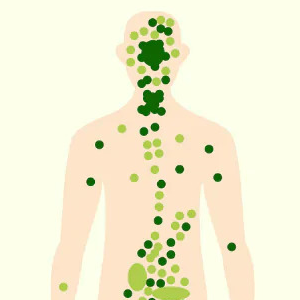The endocannabinoid (EC) system helps the body manage anxiety, inflammation, and other physiological responses to different forms of stress. Strenuous exercise, stress, and other nervous system stimulation causes the body to produce compounds called endocannabinoids. Endocannabinoids (ECs) are signaling molecules that trigger the activation of the EC system when they are detected by cannabinoid receptors.
Cannabinoid receptors (CRs) can detect the presence of EC. The term cannabinoid refers to any compound that triggers the EC system by activating the receptors. Anandamide is an EC compound produced in the body. Anandamide activates two types of CRs, cannabinoid receptor 1 (CB1) and cannabinoid receptor 2 (CB2).



A “runner’s high” is a perfect example of the EC system at work. After extended strenuous exercise, the body begins to produce anandamide in order to activate CRs and turn on our EC system. The “runner’s high” has two basic components: slight euphoria, and soothing the muscles and joints. Both outcomes are linked with two distinct structures: the CB1 and CB2 receptors. CB1 receptors are mainly found in the brain and central nervous system, and are linked with pleasure and reward pathways. CB1 receptor activation leads to feelings of euphoria. CB2 receptors are found in the rest of the body, like the muscles, skin, and vital organs. They are mainly found on the surface of white blood cells, and their activation affects the regulation of inflammation chemicals called cytokines.
CANNABINOIDS
Cannabinoids are several structural classes of compounds found in the Cannabis plant primarily and most animal organisms or as synthetic compounds. The most notable cannabinoid is the phytocannabinoid tetrahydrocannabinol, the primary intoxicating compound in cannabis
FLAVONOIDS
Flavonoids are a class of polyphenolic secondary metabolites found in plants, and thus commonly consumed in the diets of humans. Chemically, flavonoids have the general structure of a 15-carbon skeleton, which consists of two phenyl rings and a heterocyclic ring. This carbon structure can be abbreviated C6-C3-C6.
TERPENES
Terpenes are a class of natural products consisting of compounds with the formulaₙ. Comprising more than 30,000 compounds, these unsaturated hydrocarbons are produced predominantly by plants, particularly conifers. Terpenes are further classified by the number of carbons: monoterpenes, sesquiterpenes, diterpenes, as examples.
The terpene, alpha-pinene, is a major component of the common solvent, turpentine.












